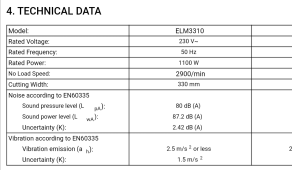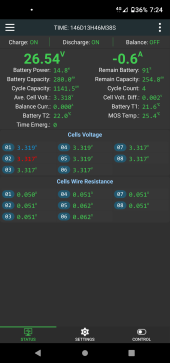Hi all,
I'm running a 24V 280Ah LiFePO4 battery using a 200A JK BMS + 2.4 KW Easun inverter.
Recently I ran into a strange issue: I used a lawn mower machine rated at 1.1 KW for 5 min, all worked well, but then I saw the battery SOC dropped from ~80% to 3% (JK BMS app).
No error logs on the BMS or inverter.
I then charged the battery again, at 23% the cells reached 3.45V .
I have reset the cell ever voltage protection parameter and then the SOC was recalculated at 95%, which should be about right...
I do not understand what happened. Which events can cause SOC recalculation? And how did it get to this value? Do I need to check anything?
I'm running a 24V 280Ah LiFePO4 battery using a 200A JK BMS + 2.4 KW Easun inverter.
Recently I ran into a strange issue: I used a lawn mower machine rated at 1.1 KW for 5 min, all worked well, but then I saw the battery SOC dropped from ~80% to 3% (JK BMS app).
No error logs on the BMS or inverter.
I then charged the battery again, at 23% the cells reached 3.45V .
I have reset the cell ever voltage protection parameter and then the SOC was recalculated at 95%, which should be about right...
I do not understand what happened. Which events can cause SOC recalculation? And how did it get to this value? Do I need to check anything?






